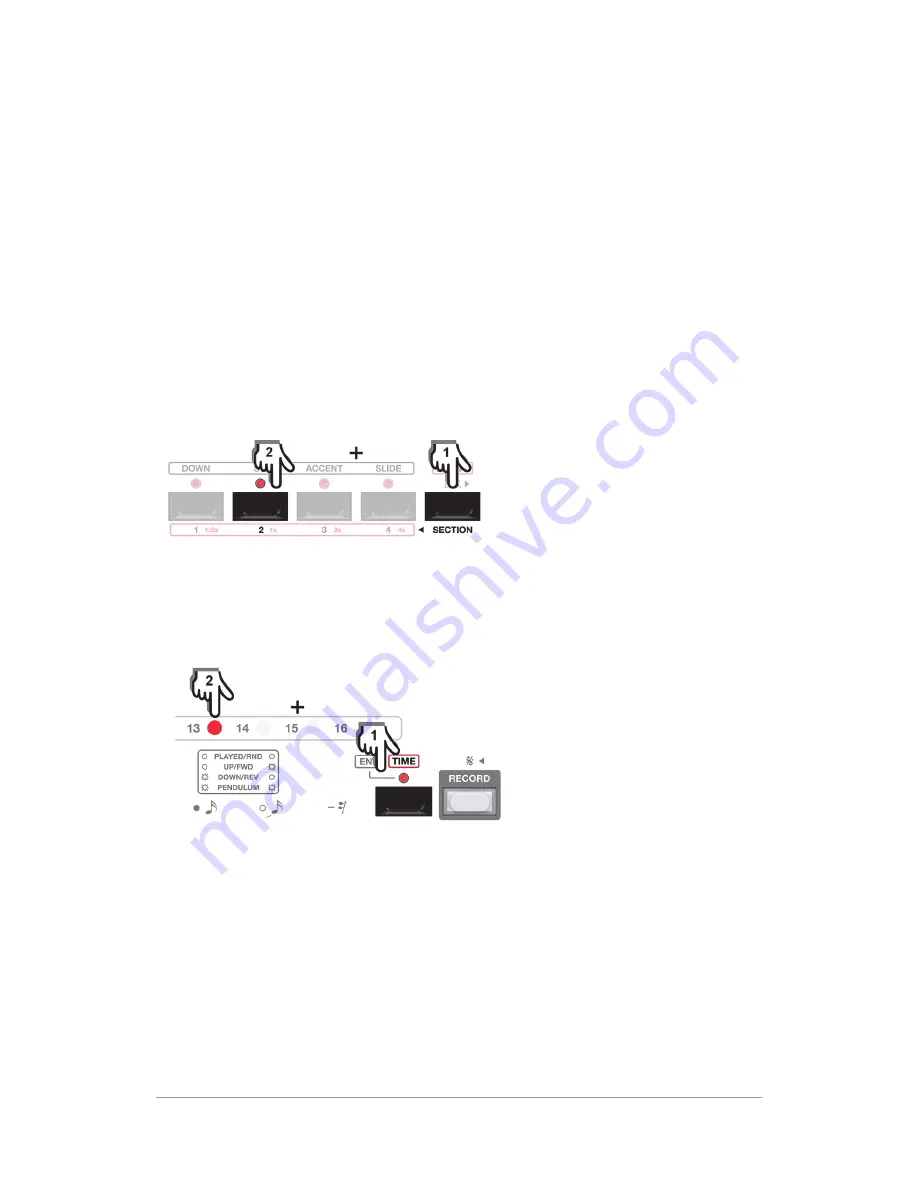
14
Avalon - Quick Start Manual
4.7.4 PATTERN GLOBAL MODIFIERS
Pattern modifiers are the global settings for each pattern, such as the time signature, pattern length, and
shuffle amount.
1)
Pattern Length
2)
Last Step
3)
Time Signature
*
4)
Shuffle
*
5)
Pattern Direction
*
6)
Pattern Rotate
*
7)
Pattern Randomize
*
8)
Pattern Transpose
*
9)
Filter Mode
*
*
These global modifiers won't be covered in this quick start manual, see the reference manual for details.
4.7.4.1 PATTERN LENGTH
Patterns can be up to (64) steps long. They are divided into four SECTIONS of (16) steps.
Sections are selected by pressing
S BUTTON 1
-
4
. When the current section is changed the
control surface shifts to display and control the parameters for the newly selected section. For example, to
select SECTION 2 press
S BUTTON 2
(
if the pattern is less than or equal to 16 steps
there may not yet be any active data in the
section).
4.7.4.2 LAST STEP
Before changing pattern lengths and entering step attributes it is important to understand LAST STEP.
LAST STEP sets the last step of a pattern
so that the sequencer knows when to
loop. To set the last step for a pattern
first select the SECTION of the desired
last step as described above in section
4.7.5.1. Once viewing the desired
section press
[
TIME
]
+ STEP BUTTON
of the desired last step.
For example, to set the last step as
step
29
of a sequence you would do as
follows:
a) Select SECTION 2 by pressing
S BUTTON 2
as shown in section 4.7.5.1.
b) Select the last step within SECTION 2 (
step 29
) by pressing
[
TIME
]
+ STEP BUTTON 13
. The indicator will
light solid.
Now the pattern will cycle through two sections (29 steps total assuming all steps are set to be active
steps). When pressing and holding the
[
TIME
]
button the last step will show on the
STEP BUTTON
indicators.
Summary of Contents for AVALON
Page 1: ...QUICK START MANUAL ...


















